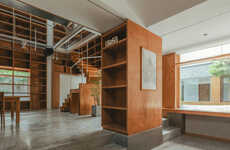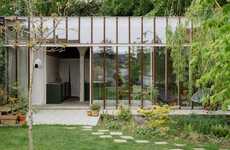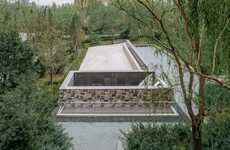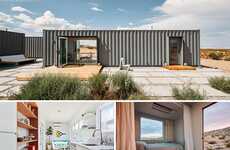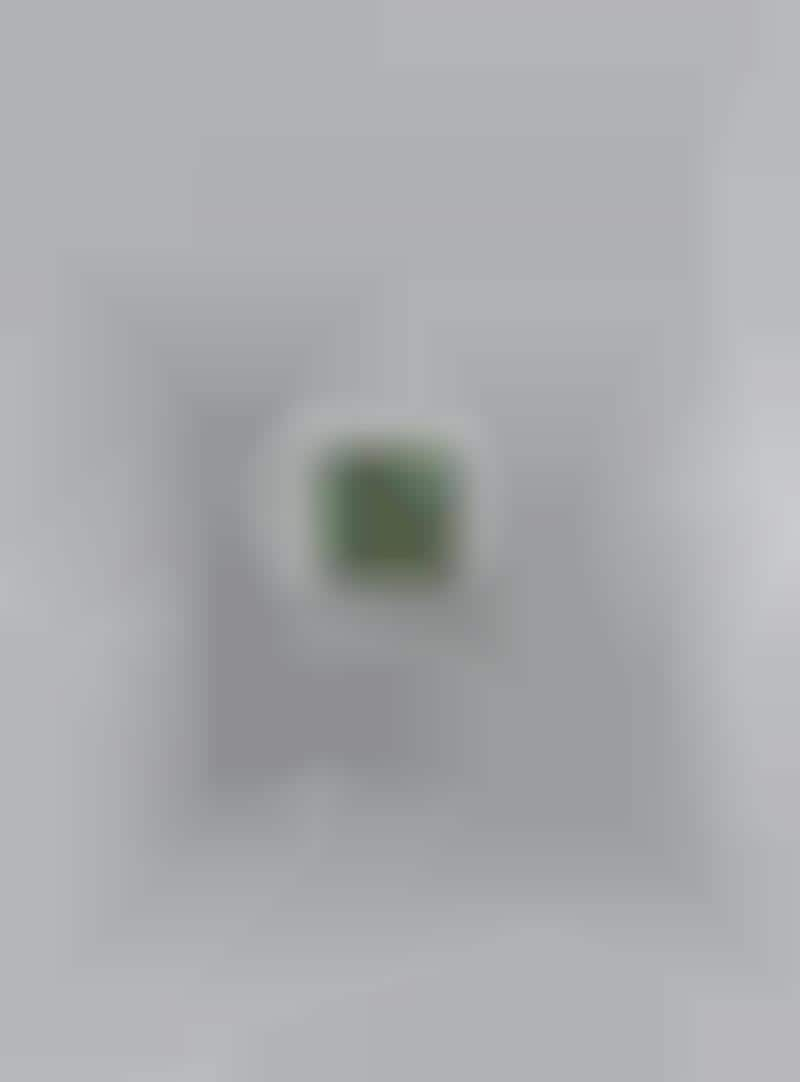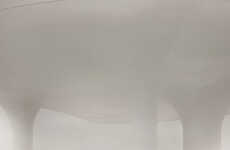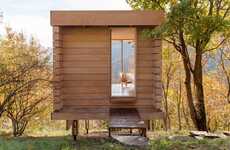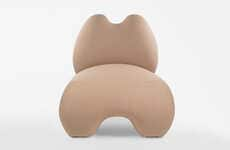
Jun Murata's Meditation Space Integrates Its Surroundings
Riley von Niessen — April 2, 2020 — Art & Design
References: junmurata & design-milk
Located in Beijing, China, is a studio and gallery called Meditation Space, which was designed by architect Jun Murata to honor the surrounding beauty of the environment, and provide those who visit with a relaxing space that inspires creativity.
Meditation Space consists of a series of shipping containers, which are stacked upon one another to offer more space, and have been adapted to let in as much natural light as possible. This means that many of the shipping containers are missing walls, or have large skylights cut into them.
While Meditation Space provides adequate shelter, its open concept design allows visitors to feel like they haven't left the outdoors at all. Combined with the stark minimalism of the interior design, which favors blunt hues of white and clean lines, Meditation Space offers a beautiful environment that's free of unnecessary distractions.
Image Credit: Design Milk
Meditation Space consists of a series of shipping containers, which are stacked upon one another to offer more space, and have been adapted to let in as much natural light as possible. This means that many of the shipping containers are missing walls, or have large skylights cut into them.
While Meditation Space provides adequate shelter, its open concept design allows visitors to feel like they haven't left the outdoors at all. Combined with the stark minimalism of the interior design, which favors blunt hues of white and clean lines, Meditation Space offers a beautiful environment that's free of unnecessary distractions.
Image Credit: Design Milk
Trend Themes
1. Nature-inspired Architecture - Disruptive innovation opportunity: Incorporating natural elements and designs into architecture to create harmonious and sustainable spaces.
2. Open Concept Design - Disruptive innovation opportunity: Breaking away from traditional closed-off structures to create open, airy environments that blur the lines between indoor and outdoor spaces.
3. Minimalist Interior Design - Disruptive innovation opportunity: Embracing simplicity and understated elegance in interior design to create clean and calming spaces.
Industry Implications
1. Architecture - Disruptive innovation opportunity: Rethinking traditional architectural practices and embracing nature-focused designs.
2. Interior Design - Disruptive innovation opportunity: Reimagining interior spaces to prioritize minimalism and create serene environments.
3. Wellness and Meditation - Disruptive innovation opportunity: Creating immersive and nature-inspired meditation spaces that promote relaxation and creativity.
5
Score
Popularity
Activity
Freshness

